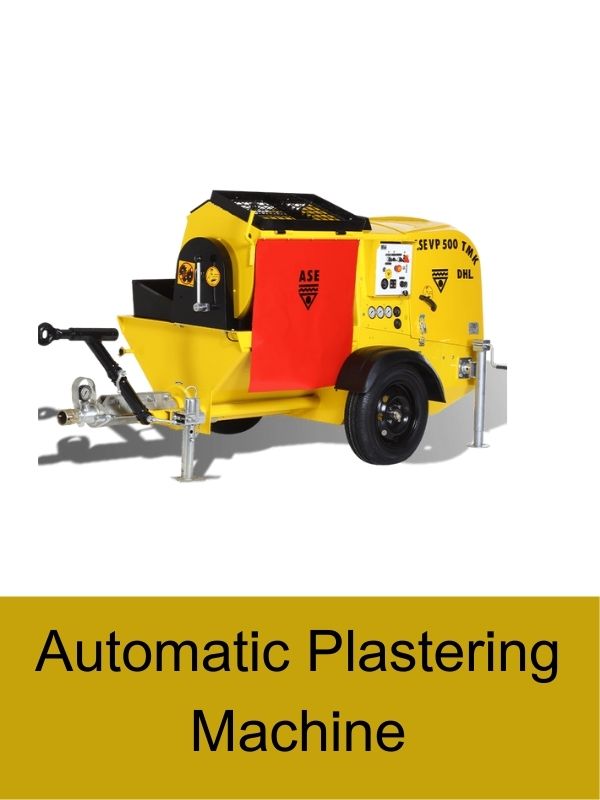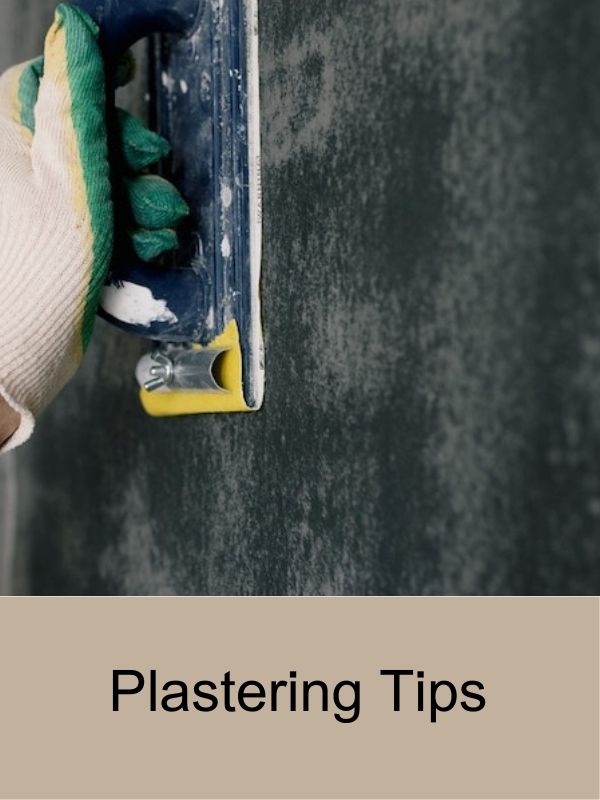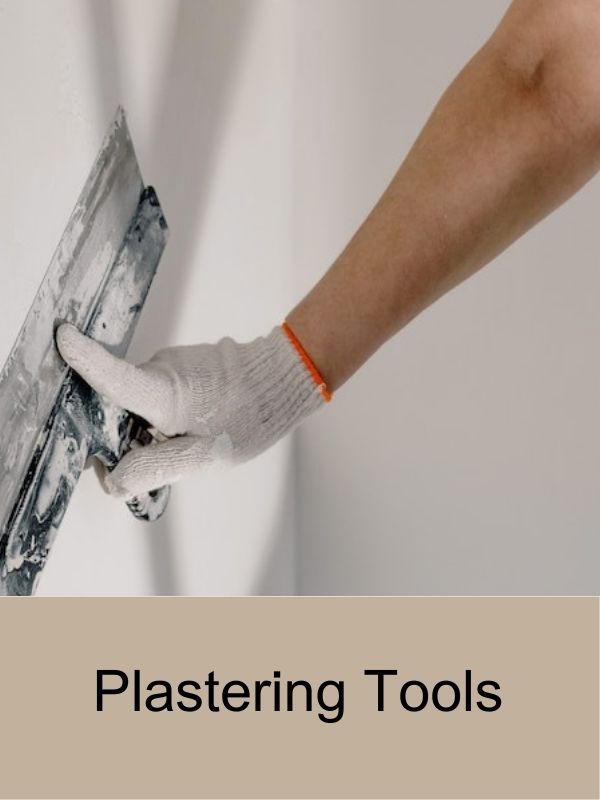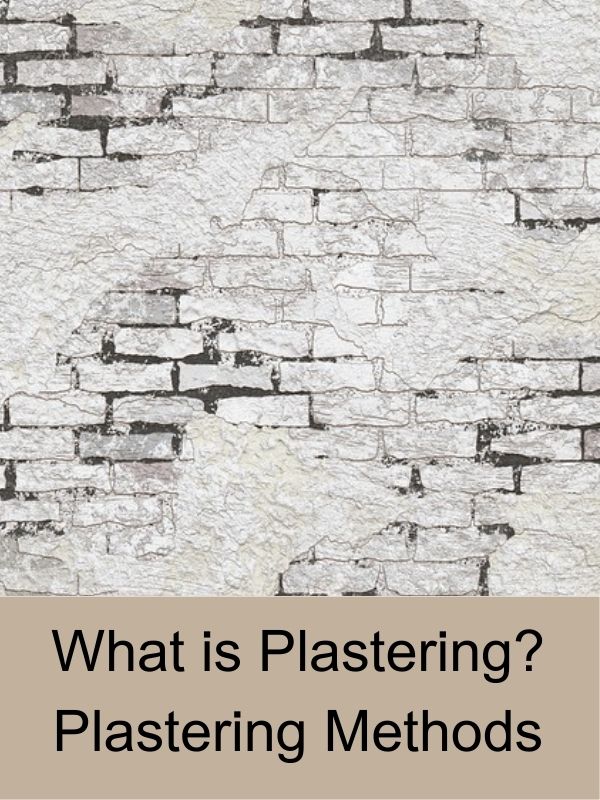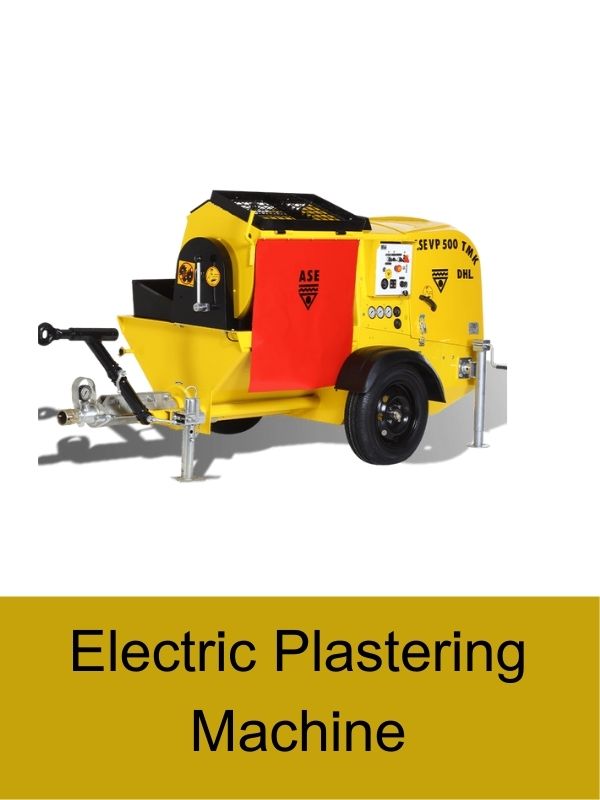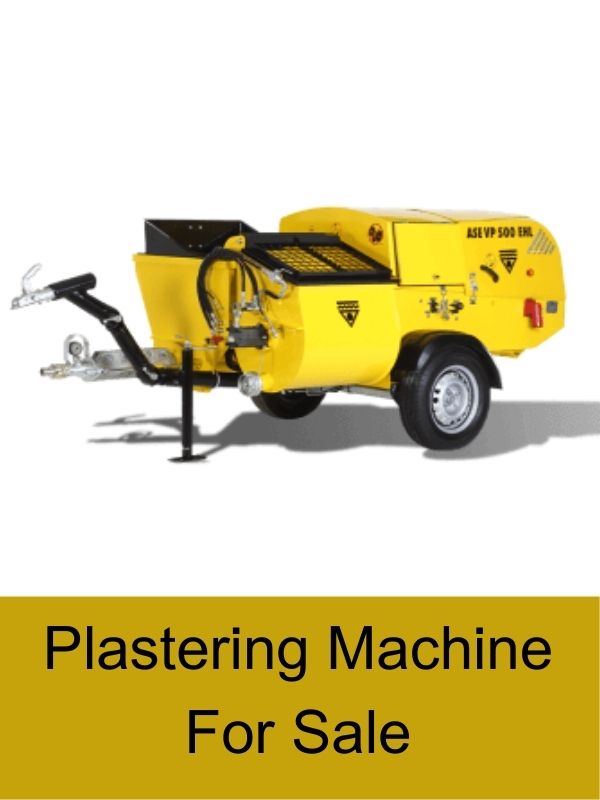The construction industry has always been driven by innovation and advancements aimed at enhancing efficiency and productivity. One such breakthrough in recent years has been the introduction of automatic plastering machines. These cutting-edge devices have revolutionized the process of plastering walls, offering numerous benefits over traditional manual methods. In this article, we will delve into the world of automatic plastering machines, exploring their functionality, advantages, types, and applications.
What is an Automatic Plastering Machine?
An automatic plastering machine is a state-of-the-art construction tool designed to automate the process of applying plaster or mortar to walls and ceilings. By mechanizing the traditionally labor-intensive task of plastering, these machines streamline the construction process and deliver consistent and high-quality finishes.
Benefits of Using an Automatic Plastering Machine
Time and Labor Savings
One of the primary advantages of employing an automatic plastering machine is the significant time and labor savings it offers. Compared to manual plastering, which requires skilled workers to spend hours meticulously applying plaster, an automatic machine can complete the task in a fraction of the time. This accelerated workflow translates into increased project efficiency and reduced labor costs.
Consistent Quality and Finish
With manual plastering, achieving consistent and uniform results can be challenging, as human error and fatigue can lead to variations in the thickness and texture of the applied plaster. In contrast, automatic plastering machines ensure a consistent finish throughout the entire surface, eliminating discrepancies and enhancing the overall aesthetic appeal of the walls.
Increased Efficiency
Automatic plastering machines are designed to optimize efficiency by minimizing material waste and improving the overall workflow. These machines can accurately control the amount of plaster applied, ensuring the right mix and thickness for optimal coverage. Additionally, they streamline the plastering process by automating tasks such as mixing, pumping, and spraying, resulting in a seamless and efficient operation.
How Does an Automatic Plastering Machine Work?
Automatic plastering machines consist of several key components that work together to deliver exceptional results. The main components include a plaster pump, a mixing system, a spraying mechanism, and a control panel. The process of plastering with an automatic machine involves the following steps:
- Preparation: The surface to be plastered is prepared by cleaning, leveling, and ensuring a suitable base for plaster application.
- Mixing: The machine’s mixing system combines plaster or mortar with water, ensuring a consistent and homogenous mix.
- Pumping: The plaster pump sucks the mixture from the mixing chamber and pumps it through hoses to the spraying mechanism.
- Spraying: The spraying mechanism evenly distributes the plaster onto the wall, utilizing compressed air to achieve a smooth and uniform finish.
- Control and Adjustment: The operator uses the control panel to regulate the flow rate, pressure, and thickness of the plaster, ensuring the desired results.
Types of Automatic Plastering Machines
Automatic plastering machines come in various types, each catering to specific plastering requirements and materials. The two primary categories include cement-based plastering machines and gypsum-based plastering machines.
Cement-based plastering machines are versatile and widely used for both interior and exterior plastering. They can handle various materials, such as cement-based plasters, lime-based plasters, and dry mix mortars. These machines offer flexibility and can adapt to different types of surfaces and finishes.
On the other hand, gypsum-based plastering machines are specifically designed for applying gypsum-based plasters and renders. These machines are commonly used in projects that require a high-quality and smooth finish, such as decorative plastering and architectural designs.
Applications of Automatic Plastering Machines
Automatic plastering machines find application in various construction projects, including residential and commercial buildings, as well as renovation and restoration projects. Their versatility allows for plastering on different surfaces, including brick, concrete, block, and drywall. Some of the key applications include:
Residential Construction
In residential construction, automatic plastering machines enable faster and more efficient plastering of walls and ceilings. These machines can handle large volumes of plastering work, reducing construction timelines and ensuring timely project completion.
Commercial Construction
The use of automatic plastering machines in commercial construction projects offers significant advantages in terms of time and cost savings. They enable the plastering of extensive areas with consistent quality, meeting the stringent requirements of commercial spaces.
Renovation and Restoration Projects
Automatic plastering machines play a vital role in renovation and restoration projects, where old surfaces need to be repaired or refreshed. These machines can efficiently apply plaster over existing walls, ensuring a uniform and professional finish without the need for extensive manual labor.
Challenges and Limitations of Automatic Plastering Machines
While automatic plastering machines offer numerous benefits, they also face certain challenges and limitations that need to be considered:
Complex Surfaces and Corners
Automatic machines may face difficulties when plastering complex surfaces, corners, or intricate architectural details. In such cases, manual intervention or additional tools may be required to achieve the desired results.
Material Compatibility
Different plastering materials may require specific machine adaptations or settings. It is important to ensure that the chosen automatic plastering machine is compatible with the intended plaster material to achieve optimal performance.
Initial Investment Cost
Automatic plastering machines can have a higher upfront cost compared to traditional manual methods. However, it is essential to consider the long-term benefits and potential cost savings in labor, time, and material to determine the overall return on investment.
Operator Skill and Training
Operating an automatic plastering machine requires proper training and expertise. Skilled operators are essential for ensuring the machine’s optimal performance, achieving desired finishes, and maintaining safety standards.
Future Trends in Automatic Plastering Machines
As technology continues to advance, automatic plastering machines are expected to evolve further. Some key future trends to watch out for include:
Integration of Artificial Intelligence
Artificial intelligence (AI) can be integrated into automatic plastering machines to enhance their capabilities. AI algorithms can analyze the surface conditions, adjust plastering parameters in real-time, and even detect and correct imperfections during the plastering process.
Enhanced Robotic Capabilities
Robotic advancements may lead to the development of fully autonomous plastering machines capable of navigating complex surfaces, adjusting to changing environments, and even working collaboratively with human workers.
Sustainability and Eco-Friendly Features
In line with the growing focus on sustainability, future automatic plastering machines are likely to incorporate eco-friendly features. These may include efficient material usage, waste reduction, and the use of environmentally friendly plastering compounds.
Automatic plastering machines Models 👍
Automatic Plasterin machine Prices

